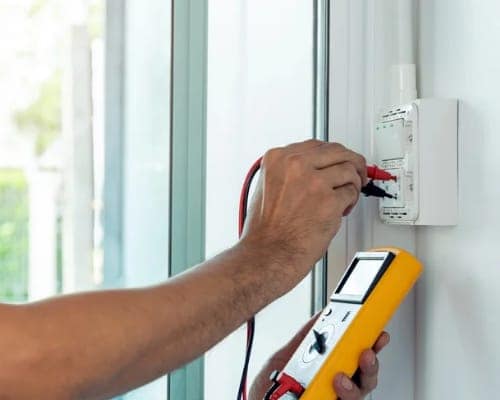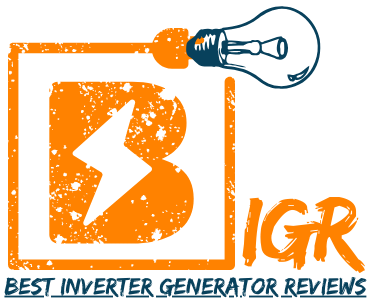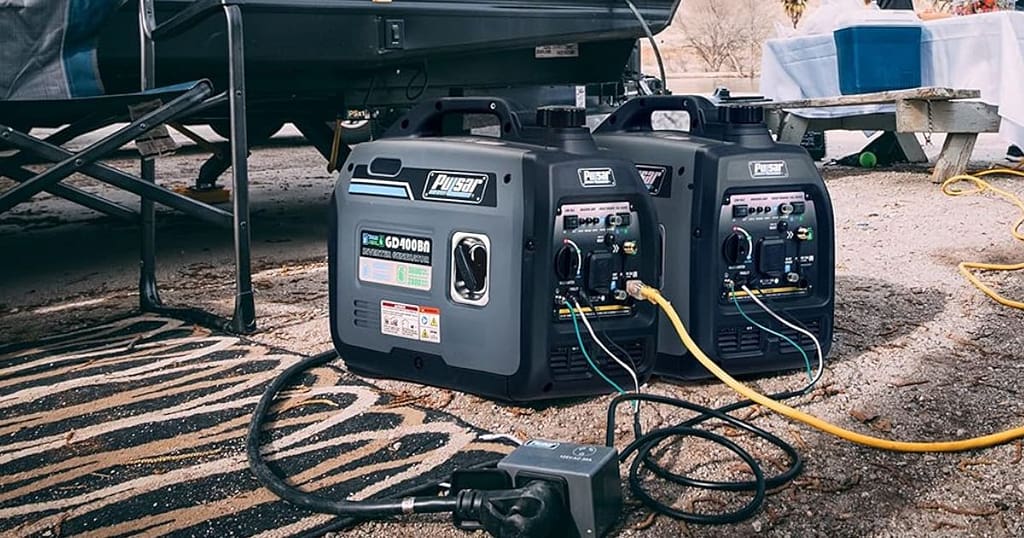
In our increasingly digital world, sensitive electronic devices have become an integral part of our daily lives. From smartphones to laptops, medical equipment to high-tech manufacturing machinery, these devices rely on stable and consistent power to function correctly. However, power sources are not always reliable, and voltage fluctuations can have a profound impact on these sensitive electronics. In this blog post, we will explore the potential consequences of voltage fluctuations on electronics and provide valuable tips on safeguarding them when using a generator.
The Impact of Voltage Fluctuations on Sensitive Electronics
Understanding Generator Voltage Fluctuations
Generator voltage fluctuations can pose significant challenges in various applications, including industrial, commercial, and residential settings. Understanding the causes of these fluctuations and implementing effective solutions is crucial to ensure a stable power supply. Below, we’ll delve into the common reasons behind generator voltage fluctuations and provide practical solutions.
Causes of Generator Voltage Fluctuations
Voltage fluctuations in generators can be compared to the ebb and flow of a river’s current. They are like the subtle dance of nature, influenced by several factors:
1. Load Variations – The Weight of Demand: Just as the tides of a river fluctuate with the moon’s pull, a generator’s voltage is intimately tied to its load. Much like a ship navigating changing water levels, a generator tries to adapt its voltage to match the fluctuating demands.
2. Fuel Supply – The Lifeline: The fuel supply to a generator is akin to the air we breathe. Just as irregular breathing can affect a person’s composure, inconsistent or insufficient fuel supply can throw the generator off balance. Its filters and injectors are like its lungs, needing care to ensure smooth operation.
3. Engine Speed – The Heartbeat: Picture the generator’s engine as its heart. Irregularities in the heartbeat can be troubling. Just as our health depends on a steady pulse, the generator’s voltage relies on a stable engine speed. Proper maintenance is its regimen to ensure a steady beat.
4. Voltage Regulator – The Orchestra Conductor: Think of the voltage regulator as the conductor of a symphony. Its role is to harmonize the output voltage. A malfunctioning or misadjusted regulator is like a conductor losing control of the orchestra, leading to a discordant performance. Regular inspections are the rehearsals to maintain harmony.
5. Transient Loads – The Weather’s Whims: Transient loads are like the capricious weather patterns. Sudden connections and disconnections of powerful devices disrupt the generator’s equilibrium, much like an unexpected storm disturbs the river’s course.
Just as understanding the river’s currents is essential for a sailor, comprehending these generator voltage fluctuations is crucial for those who rely on stable power supply. It’s a delicate interplay of mechanics, fuel, and control, much like the subtle forces of nature that shape our world.
Solutions to Stabilize Generator Voltage
1. Load Balancing: Distributing the load evenly among multiple generators or utilizing load shedding systems can help maintain a consistent load profile, reducing voltage fluctuations.
2. Regular Maintenance: Scheduled maintenance of the generator, including fuel system checks, engine tune-ups, and voltage regulator inspections, is essential to prevent voltage issues caused by mechanical problems.
3. Voltage Regulator Adjustment: Ensure that the voltage regulator is correctly calibrated to maintain the desired voltage level. Periodically check and recalibrate it as needed.
4. Transient Voltage Suppressors: Installing transient voltage suppressors or surge protectors can mitigate voltage spikes caused by transient loads. These devices absorb excess energy and protect sensitive equipment.
5. Fuel Quality Control: Use high-quality fuel and establish a robust fuel management system to ensure a steady and clean fuel supply. Regularly test and filter fuel to prevent fuel-related issues.
6. Governing System Maintenance: Maintain the governing system to ensure consistent engine speed. This includes inspecting and adjusting governor settings as required.
7. Automatic Voltage Regulators (AVRs): Consider using AVR systems that automatically adjust generator output voltage to compensate for load variations, helping to stabilize voltage.
8. Load Scheduling: Implement load scheduling and sequencing systems to control the connection of large loads, minimizing abrupt changes that could affect voltage stability.
9. Monitoring and Remote Control: Invest in advanced monitoring systems that provide real-time data on generator performance. Remote control capabilities allow for quick adjustments when voltage fluctuations occur.
Impact on Sensitive Electronics
Voltage fluctuations can be a silent menace to sensitive electronics, manifesting their impact in several intricate ways:
1. Component Damage:
The abrupt and uninvited surges in voltage can impose a heavy toll on the minute yet vital constituents of these devices. Delicate components like transistors, capacitors, and integrated circuits are vulnerable to overloading, pushing them to the brink of failure or even a premature degradation. It’s akin to the delicate threads in the tapestry of electronics, unraveling unexpectedly.
2. Data Loss:
Voltage sags, the often unnoticed cousins of surges, bring with them the specter of data corruption or, in the worst cases, complete loss. This peril becomes especially pronounced in devices lacking a protective cocoon of backup power. Think of a writer crafting their masterpiece on a computer, only to have it torn asunder by an unforeseen voltage dip, leaving their unsaved work as digital debris.
3. Reduced Lifespan:
Like a constant barrage of unforeseen storms, consistent exposure to voltage fluctuations weathers the once-sturdy vessels of our electronic devices. The steady erosion of their integrity can significantly curtail their lifespan, leaving you with the dual burdens of replacements and costly repairs. It’s a clandestine, long-term financial toll, where the cumulative cost of unpredictability can be steep.
These subtle perils highlight the need for vigilant power management and the implementation of protective measures to safeguard the electronic marvels that have become integral to our daily lives.
Tips for Protecting Sensitive Electronics When Using a Generator
1: The Science Behind Voltage Stabilization:
Voltage regulators and surge protectors work by employing advanced electronic components. Voltage regulators employ integrated circuits to precisely control voltage, while surge protectors use metal oxide varistors to divert excess voltage. Understanding the underlying technology empowers users to appreciate the sophistication of these devices.
2. Generators’ Harmonic Distortion:
In addition to matching power requirements, selecting the right generator involves considering harmonic distortion. Generators can introduce harmonics into the electrical waveform, affecting the quality of power supplied to electronics. Lower harmonic distortion generators are essential for sensitive equipment.
3. UPS:
A Backup Power Hero: Delving deeper, uninterruptible power supplies (UPS) consist of batteries and inverters. During power outages, these batteries convert stored energy into a clean power source, ensuring seamless operation for critical electronics. Understanding the battery technology and inverter efficiency enhances the appreciation of their role.
4. Grounding for Safety and Stability:
The importance of proper grounding extends beyond preventing voltage fluctuations. It also ensures safety by directing potential electrical faults safely into the ground. Grounding rods and conductors create a low-resistance path for electrical faults to dissipate harmlessly.
5. Generator Maintenance:
More Than Just Filters and Oil Changes: Beyond basic maintenance, consider the intricacies of generator upkeep. This includes monitoring and adjusting voltage and frequency settings, addressing fuel quality and storage, and inspecting the generator’s alternator and control systems. Regular maintenance ensures the generator remains a reliable power source.
These deep insights not only provide valuable tips for protecting sensitive electronics but also foster a deeper understanding of the underlying technology and principles involved.
Generator Voltage Fluctuations in Extreme Weather Conditions
Extreme weather conditions can significantly affect generator voltage. When faced with a severe storm or extreme cold, generators might experience fluctuations in voltage due to several factors. Cold temperatures can lead to increased resistance in electrical components, potentially causing voltage drops. Storms, on the other hand, can disrupt power lines and generators, resulting in voltage spikes or sudden drops.
To manage voltage fluctuations during such conditions, it’s crucial to employ various strategies. Firstly, regular maintenance of generators is essential to ensure they are in optimal working condition. This includes checking and replacing worn-out components, which can prevent voltage fluctuations. Additionally, the use of voltage regulators and surge protectors can help stabilize voltage during storms and prevent voltage spikes.
Moreover, having backup power sources, such as batteries or uninterruptible power supplies (UPS), can provide a seamless transition during voltage fluctuations. These systems can bridge the gap during voltage drops, ensuring continuous power supply to critical equipment.
Another approach involves load shedding, which is the deliberate reduction of power consumption during extreme weather events. By prioritizing essential equipment and reducing the load on the generator, voltage stability can be maintained.
Can voltage fluctuations cause permanent damage to electronics?
Voltage fluctuations can indeed cause permanent damage to electronics. When voltage levels go beyond the tolerances specified for a device, it can lead to overheating, electrical shorts, and component failures, potentially rendering the electronics irreparable. Conversely, prolonged exposure to voltage levels lower than what the device needs may lead to erratic behavior and data corruption. To safeguard your electronics, it’s advisable to use surge protectors, voltage stabilizers, or uninterruptible power supplies (UPS) to regulate and protect against voltage fluctuations.
Conclusion
Voltage fluctuations pose a significant threat to sensitive electronics, potentially leading to damage, data loss, and shortened lifespans. To protect your valuable devices when using a generator, invest in voltage regulation equipment, choose an appropriately sized generator, and implement UPS systems where needed. With proper precautions, you can ensure that your electronics remain safe and functional, even in the face of fluctuating voltages.




